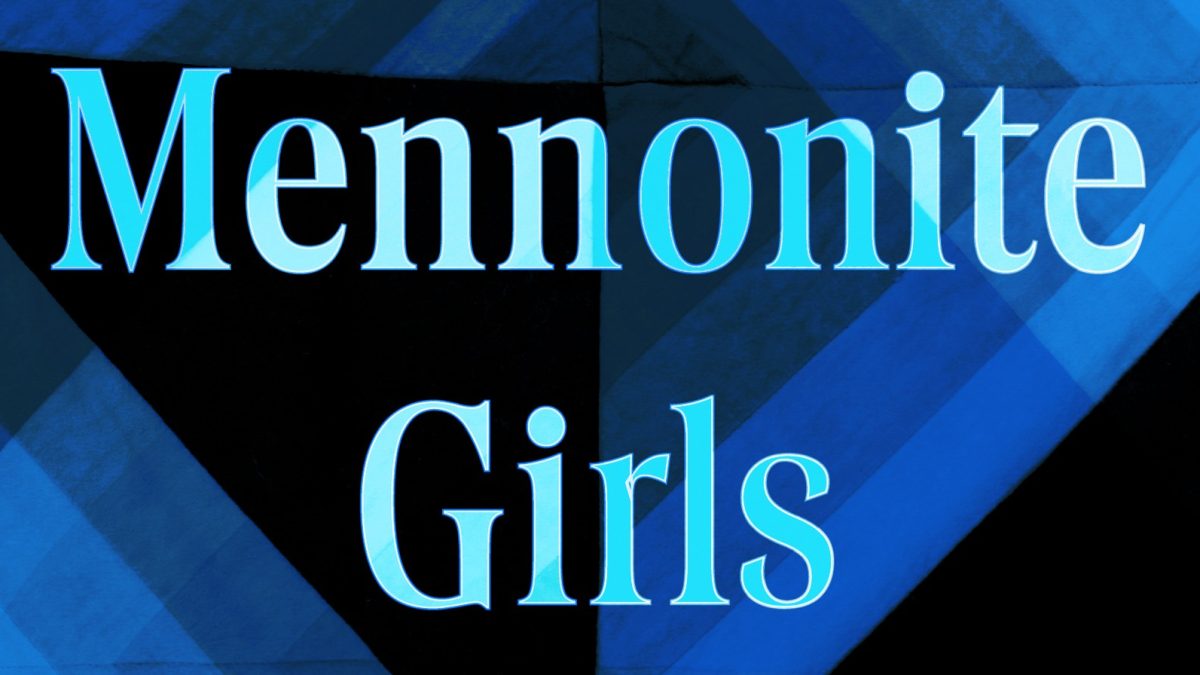Electric Literature is pleased to reveal the cover of What Mennonite Girls Are Good For by Jennifer Sears, which will be published on November 25, 2025 by the University of Iowa Press. You can pre-order your copy here.
At the heart of What Mennonite Girls Are Good For is Ruthie’s lonely search for love and a truth she can believe in. A minister’s daughter raised in a community driven by ethics of pacifism and self-sacrifice, Ruthie and her identical twin sister Rachel find themselves in Asuncion, Paraguay, for them a vibrant tropical world filled with missionary songs. But Ruthie already senses something darker she is not being told, a possibility that the god she’s been promised may not even exist.
In each of these eleven connected stories, Ruthie gives away part of herself in exchange for new understanding as she finds her way in the world outside of her community and the rules she’s been given. Leaving people and places again and again, Ruthie gains a sense of herself but only through reckoning with what she’s lost. Ultimately, these stories explore how faith and identity intertwine—until they don’t. And how the haunt of memory may be what brings us back to ourselves.
Here is the cover, designed by Trudy Gershinov:
Jennifer Sears: Soon after learning What Mennonite Girls Are Good For won the John Simmons Short Fiction award, I was asked to complete a standard author questionnaire, which included suggestions for cover ideas. Still in shock at having won the prize, I filled out the form describing a girl with a quilt wrapped around her anorexic shoulder blades, inspired in part by the striking image chosen for “Foragers,” which was originally published by Electric Literature.
A month later, I received the first round of cover samples and saw the designer’s rendering of my first idea. I realized my suggestion was not just complicated, it only evoked one section of the book. But I also saw what had to remain: the quilt.
Quilts have a subtle presence in What Mennonite Girls Are Good For. They are thrown onto beds, folded in closets, stashed in vehicles, carried on mission trips to be spread onto beaches. These familial quilts contrast with the cheap quilts Ruthie encounters in hotel rooms.
In the Mennonite communities I come from, quilts are communal works of art meant to be used. Quilting is still largely a female tradition. My mother is a quilter. Generations of my aunts and grandmothers are quilters. That scraping sound of the wooden frame opening to stretch the fabric, the sight of women gathering around quilts in homes or church basements, and the time spent beside these women with their critical eye on my never-close-enough stitches are vital moments from my childhood. My mother’s quilts keep alive pieces of our family’s past––cut up cheerleading uniforms, childhood dresses, abandoned embroidery projects, scraps found in my aunts’ stashes after they died, even beloved t-shirts.
Piecing together a collection of short stories can also feel this way.
As I scrolled through the third round of cover options, which experimented with a log cabin pattern, I immediately saw the blue theme was the one. The color suggested a melancholy that haunts this book, reminding me of Ruthie’s preoccupation with the empty sky amid her growing certainty that there is no heaven. The quilt pattern offers a sense of tradition and endurance, but there is enough deviation in the designer’s skillful adjustments to suggest a maze, nodding to Ruthie’s misalignment as she seeks her own way out.
When this collection solidified into its current shape, the book and the character became something different. Ruthie’s quest for love became sadder, more vulnerable. And more honest. In one story, “Sins and Symbols,” the Shroud of Turin becomes a provocative symbol for Ruthie as she wraps herself in silk she can’t keep. A book cover isn’t a shroud as what’s inside remains a living thing. But it does contain an imprint, a suggestion of what lies beneath.
Trudi Gershinov: The University of Iowa Press’s production and design coordinator, Meghan Anderson, sent me the cover to design for this title. As the liaison to the author, Meghan shared that Sears wanted to avoid literal depictions of bonnets and crosses and other easy symbols to convey these are stories about Mennonites. Instead, the main character, Ruthie, was to be portrayed wearing a traditional Mennonite quilt. The team at Iowa also suggested I pursue the classic direction of Mary Gaitskill’s Bad Behavior and Darcey Steineke’s Suicide Blonde.
Based on that information, along with familiarizing myself with Sears’s stories, I created several designs. Though liked, the author decided to go in a different direction that was less figurative, more typographic and still, using a quilt. This opened a door to the thematic heart of the book. By offsetting the type and creating depth with the layered variations of blue in the quilt, I feel I was able to speak to Ruthie’s internal conflicts by casting a beloved object in cooler, dark tones. Being able to show this tension in the design made my part in the process rewarding.
Take a break from the news
We publish your favorite authors—even the ones you haven’t read yet. Get new fiction, essays, and poetry delivered to your inbox.
YOUR INBOX IS LIT
Enjoy strange, diverting work from The Commuter on Mondays, absorbing fiction from Recommended Reading on Wednesdays, and a roundup of our best work of the week on Fridays. Personalize your subscription preferences here.

